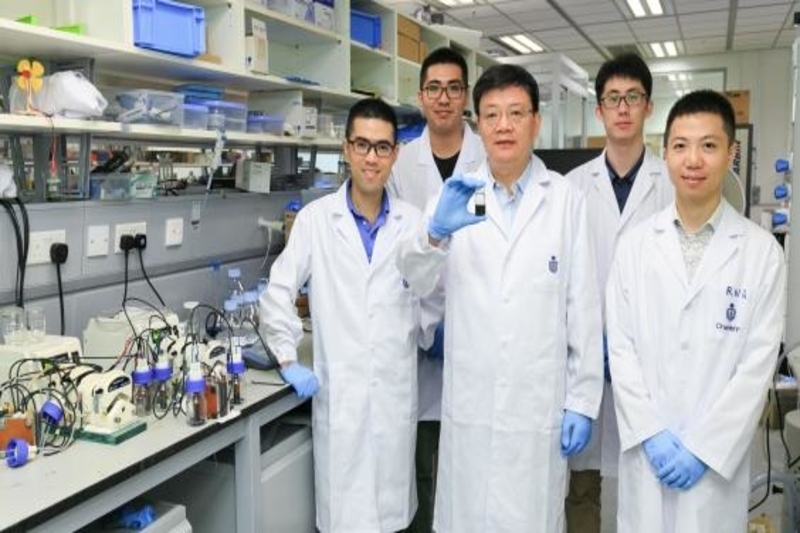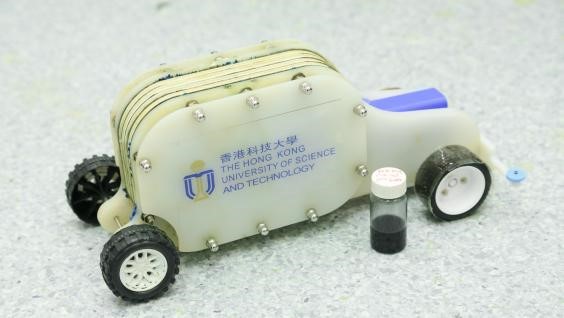
A cross-university research project led by The Hong Kong University of Science and Technology (HKUST) has successfully developed an environment-friendly rechargeable liquid fuel that promises to have impact on a global scale.

The fuel can fully recharge an electric vehicle in a matter of minutes. This is a great enhancement from existing battery technology which usually takes hours.
This fuel – called ‘e-fuel’ – is carbon-neutral if charged with solar or wind energy. Like fossil fuels, it can be readily dispatched to the power grid, and also rapidly recharged to vehicles.
The research, titled ‘Creation of Rechargeable Electron-fuels for Stationary Power Supplies and Electric Vehicles’, is led by a professor at HKUST and supported by academics from The University of Hong Kong, The Chinese University of Hong Kong, and The Hong Kong Polytechnic University.
The five-year research project – from 2018 to 2022 – is funded by the Research Grants Council Theme-based Research Scheme to the tune of HK$50 million.
A stable lithium-sulfur battery that promises to be energy-dense and capable of storing energy at low cost has been successfully developed. It can be applied to both electric vehicles and grids transmitting a high fraction of solar and wind energy.
The biggest cause for excitement is that the lithium-sulfur battery can be transformed to a flow system, or e-fuel as it is now called.
Unlike recharging a battery for hours for an electric vehicle, recharging the vehicle with e-fuel takes a matter of minutes. And since it is rechargeable, e-fuel is renewable, unlike fossil fuels, which are no longer useable after consumption.
At the recharging station, the energy-depleted e-fuel is removed from the fuel tank, which then is refilled with fully-charged e-fuel.
The e-fuel system adopts the chemistry of a lithium-sulfur battery for the high capacity of the lithium metal and the low cost of the sulfur cathode.
While the research team made great progress in developing e-fuel, they still had challenges to overcome. First, dendrites forming on the lithium surface may shorten the battery life.
Second, the discharged sulfur will dissolve and diffuse to damage the lithium anode.
A solution is to form a porous lithium anode with surface protection, previously achieved through impractical, strenuous fabrication procedures, the Assistant Professor in the same department who is working on the project, explained.
Thermodynamics is being used to further these technologies. With two spontaneous reactions, the researchers developed a porous lithium anode on a carbon skeleton, and coated it with a protective, composite layer.
This simple yet effective approach led to one of the best performance records ever achieved for a high-loading lithium-sulfur battery.
The loading – meaning the amount of active materials per area of the device – has to be high so that the high performance on paper can eventually translate into a practical, high-performance system.
While the research is still ongoing, selected results have already been published in Nature Communications – one of the world’s most prestigious multidisciplinary journals.
Since the inauguration of the journal in 2010, HKUST has contributed 22 papers, most of which represent major breakthroughs in their respective fields.
This research is indicative of the breakthroughs that are being made by universities in Hong Kong in the field of green technology. As the need to develop and support ideas that mitigate the effects of climate change and fossil fuel consumption grow more pressing, green tech innovations present renewed hope and a chance to diversify the economy.
















